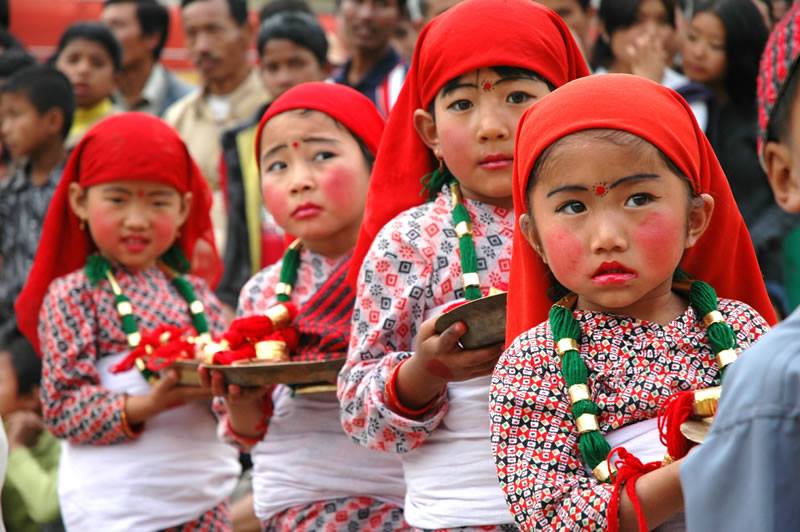Writes: Dr. Vimal Khawas
Nepali speaking Indians are often confused with the Nepalese of Nepal
ONE OF my friends recently complained to me of being verbally abused by a woman. The immediate basis of the quandary was his motorcycle parked at the allotted space. On that fateful day while the woman was on her way through the area a part of her sari accidentally happened to mesh with the edge of one of the parts of his motorcycle. She allegedly roared at him by means of some of the most improper and unfounded statements as far as the Nepali speaking Indians are concerned. “You Nepalese! You foreigners! I know you people! You people do not know how to live!” were some of her remarks.
The point here is not a mere abuse of an individual by another individual but connotes a much larger issue that needs serious discourse among the responsible Nepali speaking Indian nationals. The victim is a bona fide citizen of India and permanent resident of Kalimpong located in the district of Darjeeling, West Bengal. Like many other Indians he too is struggling in Delhi in search of better economic pastures.
There are Bengalis and Punjabis, for example, with their counterparts residing in other countries such as Bangladesh and Pakistan. But they have never been lamented as Bangladeshis or Pakistanis. In our case, however, the term Nepalese or foreigner has often been used by the mainstream Indians. So where is the problem? Why are Nepali speaking Indians often confused with the Nepalese of Nepal? Why don’t the mainstream Indians appreciate that there are about a crore Nepalis who have been the bona fide citizens of India for generations?
Before going further with the discussion let us be clear with the terms `Nepalese’ and `Nepali.’ The former is basically used to represent people with Nepalese citizenship while the latter is used to denote the Nepali speaking Indian nationals. `Nepalese’ refers to the national identity or nationality of the people of Nepal while the term `Nepali’ connotes the ethnic identity of the Indian Nepalis. Bengali, Tamil, Oriya, Punjabi, etc., are all ethnic identities of respective social groups with Indian nationality. The Nepalese from Nepal have scattered across the length and breadth of the Indian territory and got into the blue-collar jobs notably in the hotel industry, security services and as domestic helps. They are here mainly as seasonal migrant workers who would visit their country from time to time.
Two factors
Two important factors need serious debate here. First, India and Nepal signed a Treaty of Peace and Friendship on July 31, 1950. Among other things Article 7 of the treaty grants, on reciprocal basis, to the nationals of one country in the territories of the other the same privileges in the matter of residence, ownership of property, participation in trade and commerce, movement and privileges of a similar nature. The treaty is, however, silent with respect to the impact of such agreement on the already settled and bona fide Nepali Indians. Over the years on the strength of this agreement the Nepalese have been crossing the borders and spreading across the Indian territory.
Secondly, the crux of the issue has been the ill reputation carried by the Nepalese in India. Take the following points that appeared in a leading newspaper in the capital as examples: `A Nepalese servant strangles a 60-year-old woman,’ `A Nepalese servant killed a 62-year-old businessman,’ `A retired lieutenant colonel and his wife were murdered by their Nepalese servant.’
What are the repercussions of such activities of the Nepalese on the settled Nepali speaking Indians? They look identical; speak almost the same language with some dialectical variations; and bear similar names. The consequences of their deeds and misdeeds have, however, often to be borne by the settled Indian Nepalis.
Alternative arrangement
The government of India either needs to abrogate this treaty or the settled Indian Nepalis have to be protected from such onslaughts by some other means. The GNLF led `Gorkhaland’ agitation had rightly highlighted this grave issue before the relevant authorities in the 1980s. But the agitation petered out before achieving any of its objectives. Mention should, however, be made that the GNLF led by Mr. Ghisingh has been successful in bargaining for and negotiating an alternative arrangement for the settled Indian Nepalis and other social groups of the Darjeeling hills in the recent talks held in New Delhi.
It is time to highlight relevant issues such as the ones mentioned above before the government. Since the Darjeeling hills and Sikkim are the places where the Nepali speakers constitute a majority of the inhabitants, it is from these regions that voices towards these ends need to originate.








